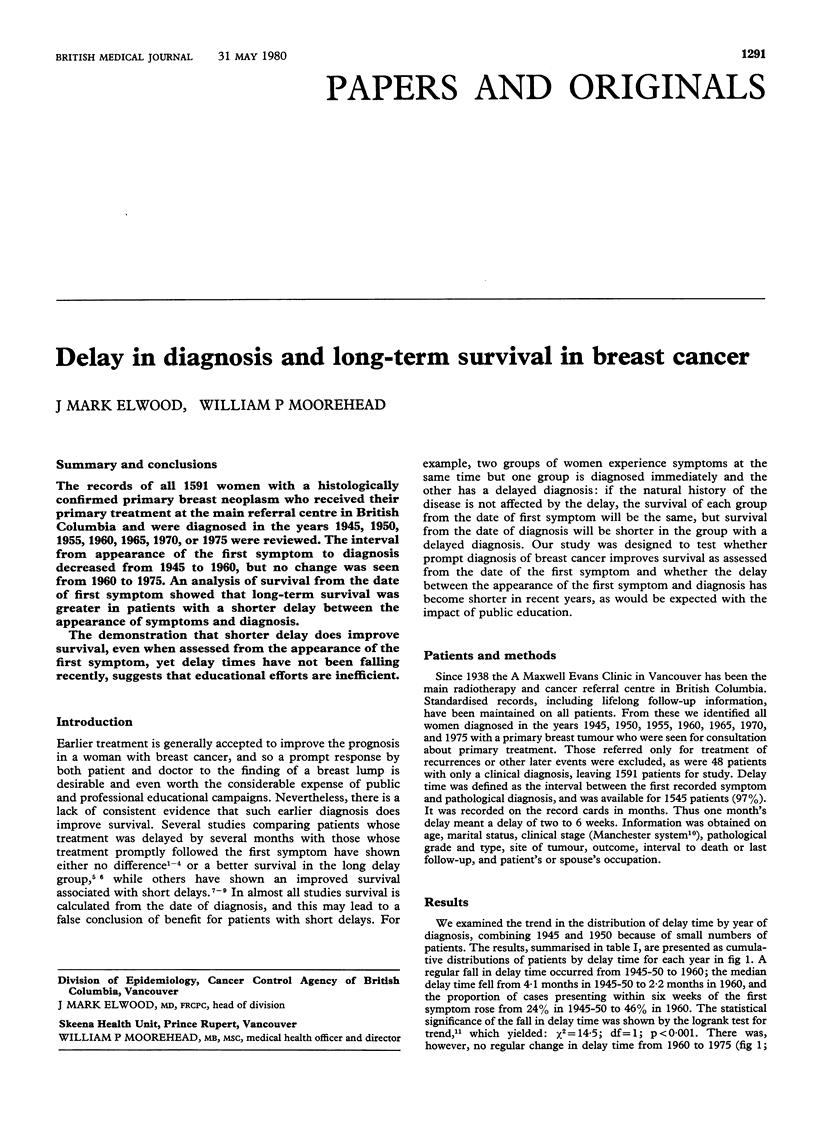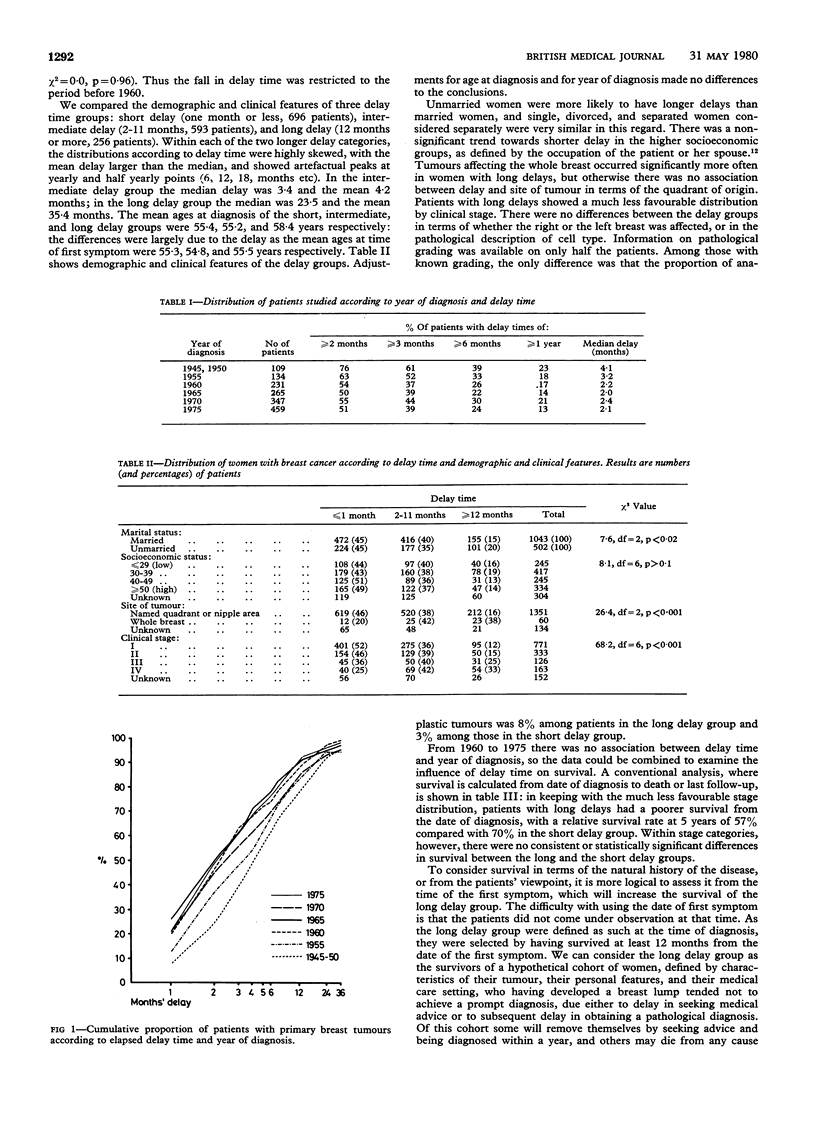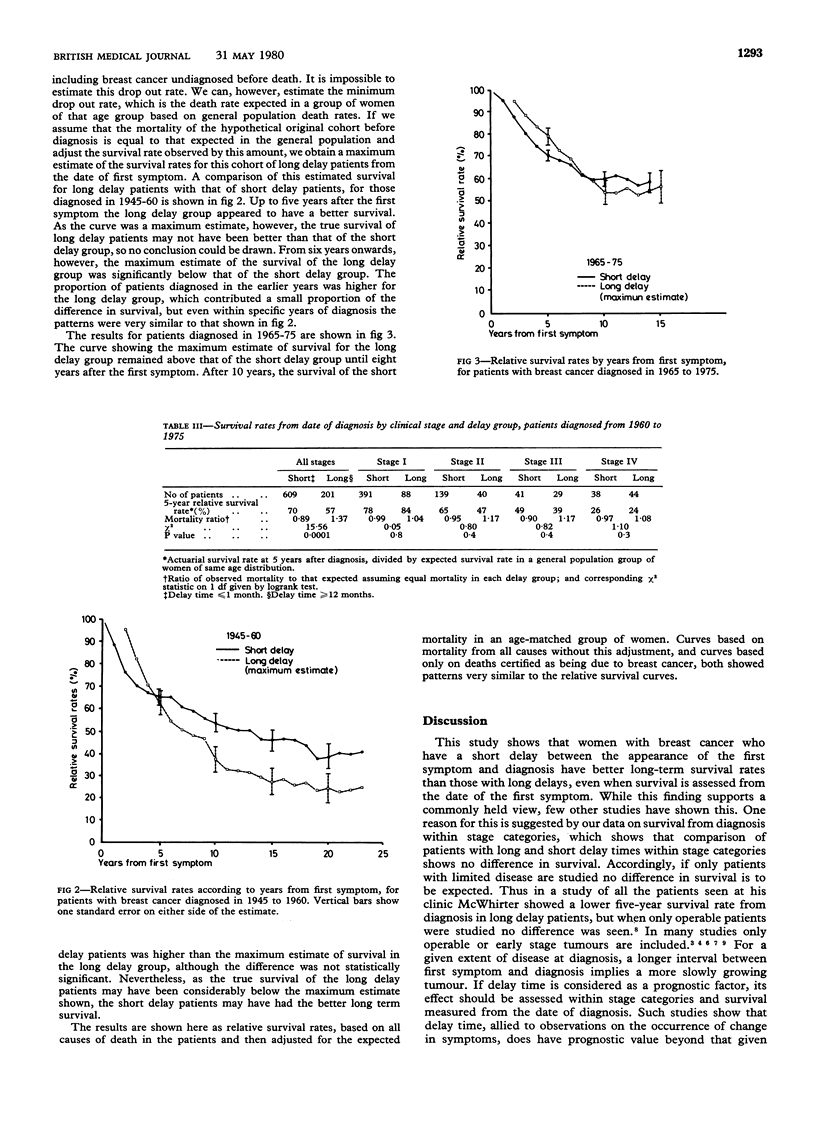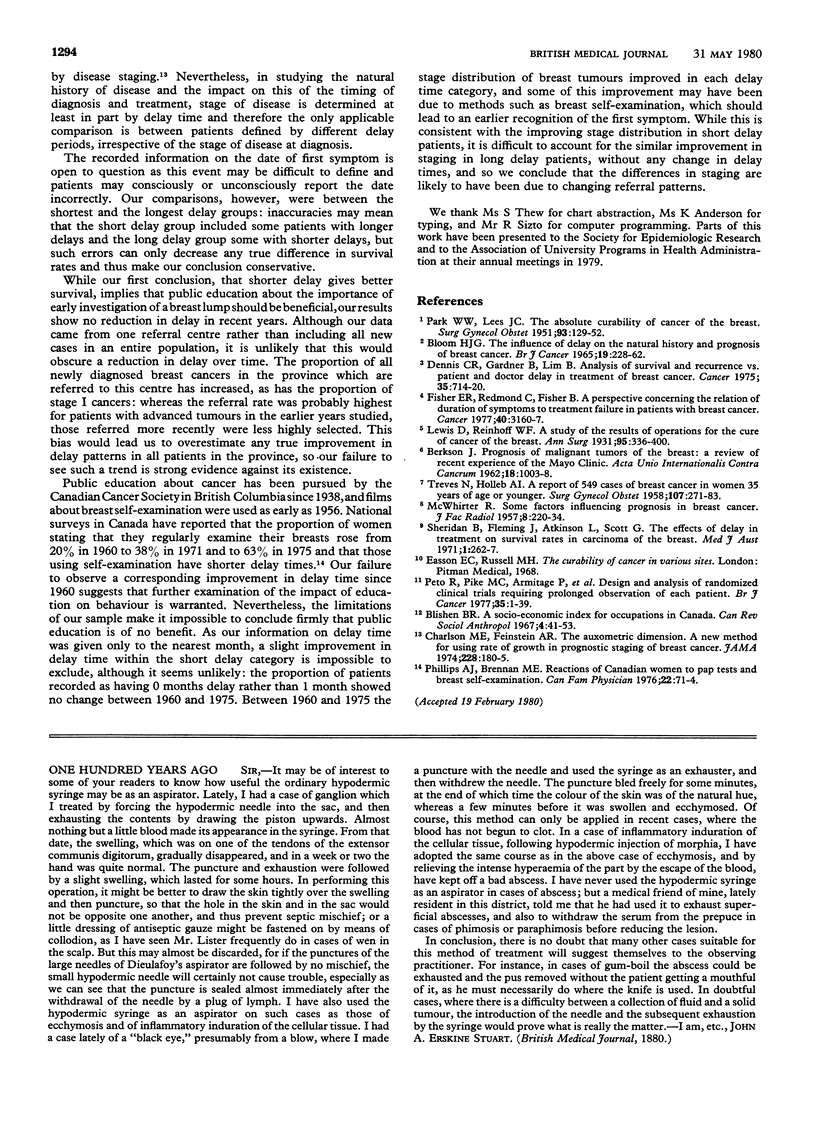Abstract
The records of all 1591 women with a histologically confirmed primary breast neoplasm who received their primary treatment at the main referral centre in British Columbia and were diagnosed in the years 1945, 1950, 1955, 1960, 1965, 1970, or 1975 were reviewed. The interval from appearance of the first symptom to diagnosis decreased from 1945 to 1960, but no change was seen from 1960 to 1975. An analysis of survival from the date of first symptom showed that long-term survival was greater in patients with a shorter delay between the appearance of symptoms and diagnosis. The demonstration that shorter delay does improve survival, even when assessed from the appearance of the first symptom, yet delay times have not been falling recently, suggests that educational efforts are inefficient.
Full text
PDF



Selected References
These references are in PubMed. This may not be the complete list of references from this article.
- BLOOM H. J. THE INFLUENCE OF DELAY ON THE NATURAL HISTORY AND PROGNOSIS OF BREAST CANCER: A STUDY OF CASES FOLLOWED FOR FIVE TO TWENTY YEARS. Br J Cancer. 1965 Jun;19:228–262. doi: 10.1038/bjc.1965.28. [DOI] [PMC free article] [PubMed] [Google Scholar]
- Charlson M. E., Feinstein A. R. The auxometric dimension. A new method for using rate of growth in prognostic staging of breast cancer. JAMA. 1974 Apr 8;228(2):180–185. doi: 10.1001/jama.228.2.180. [DOI] [PubMed] [Google Scholar]
- Dennis C. R., Gardner B., Lim B. Analysis of survival and recurrence vs. patient and doctor delay in treatment of breast cancer. Cancer. 1975 Mar;35(3):714–720. doi: 10.1002/1097-0142(197503)35:3<714::aid-cncr2820350326>3.0.co;2-v. [DOI] [PubMed] [Google Scholar]
- Fisher E. R., Redmond C., Fisher B. A perspective concerning the relation of duration of symptoms to treatment failure in patients with breast cancer. Cancer. 1977 Dec;40(6):3160–3167. doi: 10.1002/1097-0142(197712)40:6<3160::aid-cncr2820400661>3.0.co;2-p. [DOI] [PubMed] [Google Scholar]
- Lewis D., Rienhoff W. F. Results of Operations at the Johns Hopkins Hospital for Cancer of the Breast: Performed at the Johns Hopkins Hospital from 1889 to 1931. Ann Surg. 1932 Mar;95(3):336–400. doi: 10.1097/00000658-193203000-00003. [DOI] [PMC free article] [PubMed] [Google Scholar]
- PARK W. W., LEES J. C. The absolute curability of cancer of the breast. Surg Gynecol Obstet. 1951 Aug;93(2):129–152. [PubMed] [Google Scholar]
- Peto R., Pike M. C., Armitage P., Breslow N. E., Cox D. R., Howard S. V., Mantel N., McPherson K., Peto J., Smith P. G. Design and analysis of randomized clinical trials requiring prolonged observation of each patient. II. analysis and examples. Br J Cancer. 1977 Jan;35(1):1–39. doi: 10.1038/bjc.1977.1. [DOI] [PMC free article] [PubMed] [Google Scholar]
- Sheridan B., Fleming J., Atkinson L., Scott G. The effects of delay in treatment of survival rates in carcinoma of the breast. Med J Aust. 1971 Jan 30;1(5):262–267. [PubMed] [Google Scholar]
- TREVES N., HOLLEB A. I. A report of 549 cases of breast cancer in women 35 years of age or younger. Surg Gynecol Obstet. 1958 Sep;107(3):271–283. [PubMed] [Google Scholar]


